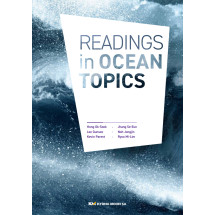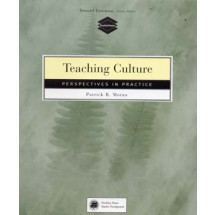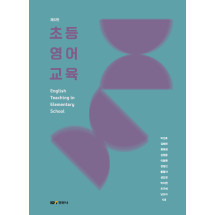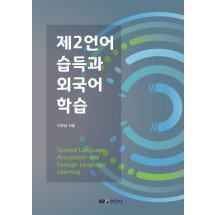PART 1 Understanding Language Assessment
UNIT 1. Purpose of Assessment
▶Introduction of the Purpose of Assessment 2
▶What is Assessment: Measurement, Testing, Assessment, and Evaluation 3
▶The Importance of Assessment in L2 Learning 4
▶Purpose of Assessment: Aptitude, Diagnostic, Placement, Achievement, and Proficiency Tests 6
▶Exercises 10
UNIT 2. Types of Language Assessment
▶Introduction of the Types of Language Assessment 12
▶Types of Language Assessment 13
▶Formative vs. Summative Assessment 13
▶Informal vs. Formal Assessment 14
▶Norm-Referenced vs. Criterion-Referenced 15
▶Discrete-point vs. Integrative Tests 15
▶Direct vs. Indirect Testing 17
▶Trends of Traditional, Alternative, and Dynamic Assessment 19
▶Influencing Theories: Behavioral Psychology, Structural Linguistics, and Psychometric Structuralism 20
▶Alternative Assessment 21
▶Influencing Theories on Alternative Assessment: CLT 22
▶Dynamic Assessment 24
▶Influencing Theories on Dynamic Assessment: Vygotsky’s Theory and ZPD 26
▶Relationships among Three Assessment Approaches 27
▶Exercises 31
UNIT 3. Quality of Assessment
▶Introduction to Quality of Assessment 33
▶Reliability Issues 34
▶Rater Reliability 35
▶Test Reliability 37
▶Validity Issues 38
▶Practicality 47
▶Authenticity 48
▶Fairness Issues 49
▶The Relationship between Reliability and Validity 50
▶Correlation in Language Assessment 52
▶Exercises 56
PART 2 Developing Assessment Tools in the classroom
UNIT 4. Test Specification
▶The introduction of the Test Specification 60
▶What is Test Specification in L2 Testing? 61
▶Writing Up Test Specification 64
▶Illustrative Action Verbs for Defining Objectives 69
▶Types of Test Items: Multiple-choice, Cloze test, Short-response, Essay 70
▶Elicitation/Response Mode in Test Construction 73
▶Exercises / 79
UNIT 5. Descriptive Statistics
▶Introduction to Descriptive Statistics in Test Analysis 81
▶Types of Numerical Scales 82
▶Descriptive Statistics 84
▶The Concept of Normal Distribution 91
▶Exercises 101
UNIT 6. Developing Scoring Criteria
▶Scoring of Performance-based Assessment 103
▶Types of Scoring Methods 104
▶Scoring in Classical Objective Tests 110
▶Exercises 116
UNIT 7. Teacher-made Criterion-referenced Tests and Standardized Norm-referenced Tests ▶Introduction of the CRTs and NRTs 117
▶Teacher-Made Criterion-Referenced Tests 118
▶Standardized Norm-Referenced Tests 123
▶Exercises 128
PART 3 Assessing Language Ability
UNIT 8. Assessing Listening
▶Introduction to Assessing L2 Learners’ Listening Ability 130
▶How to Assess L2 learners’ Listening Ability in the Classroom 131
▶Nature of L2 Listening Ability 132
▶Types of Listening Skills: Micro-skills and Macro-skills 133
▶Types of L2 Listening Strategies 135
▶How to Design an Effective Listening Task for L2 Learners 138
▶Exercises 144
UNIT 9. Assessing Reading
▶Introduction to Assessing L2 Learners’ Reading Ability 145
▶How to Assess L2 Learners’ Reading Ability in the Classroom 146
▶Types of Reading Skills: Micro-skills and Macro-skills 150
▶Types of Reading Strategies 152
▶How to Design an Effective Reading Task for L2 Learners 154
▶Exercises 163
UNIT 10. Assessing Speaking
▶Introduction to L2 Speaking Ability Assessment 165
▶Nature of L2 Speaking Ability 166
▶Types of Speaking Skills: Micro-skills and Macro-skills 167
▶How to Design an Effective Speaking Task for L2 Learners 171
▶Exercises 185
UNIT 11. Assessing Writing
▶Introduction to L2 Writing Ability Assessment 187
▶Nature of L2 Writing Ability 188
▶Types of Writing Genres 190
▶Types of Writing Skills: Micro-skills, Macro-skills, and Writing Strategies 192
▶How to Design an Effective Writing Task for L2 Learners 195
▶Standardized Tests of Writing Tasks 202
▶Exercises 207
UNIT 12. Assessing Grammar and Vocabulary
▶Introduction to Assessing L2 Learners’ Grammar and Vocabulary 209
▶Assessing L2 Learners’ Grammar Ability 210
▶How to Design an Effective Grammar Task for L2 Learners 213
▶Assessing L2 Learners’ Vocabulary Ability 218
▶How to Design an Effective Vocabulary Task for L2 Learners 220
▶Effective Strategies to Integrate Grammar and Vocabulary Knowledge 225
▶The Relationship between Vocabulary and Reading Comprehension 226
▶The Relationship between Vocabulary and Writing Quality 228
▶Exercises 232
References 235















